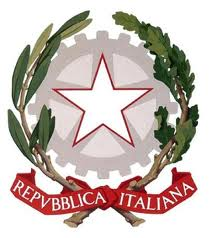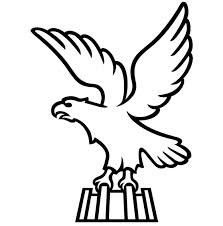ANSA/ Geologists warn, Krsko not suitable for NPPs
Seismic hazard in the area is too high, they say
17 October, 18:55(by Stefano Giantin) (ANSA) - BELGRADE, OCTOBER 17 - Authorities in Slovenia have recently put back on the table the idea of adding a second reactor to the existing one at the Krsko nuclear power plant. In August, Slovenian Prime Minister Marjan Sarec said that Slovenia may invest "all efforts" in the project as the country "will need ever more electric power" in the future, the Slovenian news agency Sta reported. In September, Sarec also confirmed that investors from the United States, Russia and from other countries are eyeing the potential construction of a second unit at Krsko. The statements of Sarec provoked negative reactions both in neighbouring Italy and in particular in Austria, where ecologists and local politicians urged the government in Vienna to oppose the project, claiming in particular that the area where Krsko is built is earthquake-prone. In the past years, authorities and politicians both in Austria and in Italy, experts, ecologists and environmental activists asked as well the power plant to be shut down, citing alleged security risks and the seismic situation in Krsko, but the Slovenian authorities always assured that the nuclear power plant is among the safest in Europe, respecting the highest international safety standards. An EU 'stress test' of 2011 at Krsko found that seismic safety margins for the Krsko plant were sufficient, the European Commission noted in 2016. However, two authoritative geologists told ANSA that the area where the power plant was built has indeed a significant higher seismic risk than thought at the time of the construction and that they are both concerned about the plans for a second reactor in the same location.
"Among all of the European nuclear power plants, Krsko is the one with the highest seismicity and the highest seismic hazard" and the area around Krsko, in the middle of the Adriatic and the Pannonian Plate, particularly prone to earthquakes, "from the seismotectonic point of view is anything but ideal," says professor Kurt Decker, an Austrian geologist at the University of Vienna, with experiences as International Atomic Energy Agency (IAEA) expert and in several 'stress tests' in Europe and Asia. "Threats include significant seismic hazard" and risks connected to "to the rupture of the ground surface by the movement of an active fault during an earthquake," and the "currently valid hazard assessment for the NPP does not account for recent findings on active faults," Decker notes, citing the opinion of several other experts that called for an update of hazard assessment of Krsko back in 2016. "When the nuclear power plant was designed, no probabilistic study of seismic hazard of the site was performed," tells ANSA also the Italian geologist Livio Sirovich, underlining that at the time "not even an updated study on the 1917 earthquake had been carried out." When Krsko was constructed, "it was not known neither what magnitude had the 1917 event nor what could be the maximum magnitude for the site." According to the current knowledge, in 1917 a medium-strong earthquake occurred in the proximity of the current plant. Estimates from 1982 spoke of a M 5.7 Richter, revalued to 6.2 in 2012 by two European experts. In 1880, another M 6.3-6.5 earthquake occurred 60 km from Krsko, provoking serious damages in Zagreb. Moreover, "the currently valid hazard assessment for Krsko does not account for recent findings on active faults" in the area, Decker also says, referring in particular to the so-called "Libna fault", identified at 1.5 kilometers from the plant.
Thinking about a "Krsko-2" in the same area where the original reactor was built "is not a wise decision," Decker explains.
"The site is located at a 'capable fault', the Libna-Fault.
According to IAEA, the existence of a capable fault at or close to the site of a new nuclear power plant is a site exclusion criterion and 'an alternative site shall be considered'", underlines Decker. "It is not understood why a site should be selected which is prone to this hazard while significantly more safety could be gained by simply selecting an alternative site," the Austrian geologist says.
Sirovich agrees. "According to our knowledge and to the seismic and recent tectonic history of the site, the strongest earthquake that can occur in a radius of approximately 20 km" from Krsko "would have magnitude M approx. 7," says Sirovich.
Moreover, according to the Italian geologist, during an earthquake the nuclear power plant could also experience a stronger peak ground acceleration (PGA) than the one that was considered during the construction. The NPP, Sirovich said, was projected to resist to 0.3 g but the project of Krsko is adequate up to accelerations of 0.6g, according to a Slovenian expert. According to the stress tests, however, earthquakes producing PGA higher than 0.8 g could provoke serious damages to the core. They occur every as a mean 50,000 years or more.
The Italian geologist as well think a second reactor should not be realized. The European Union should rather help "Slovenia to dismantle the existing power plant, because it suffers from excessive seismic risk, and it is dangerous also for other European countries." "Let me recall - Sirovich concludes - that the same opinion on this was emphasized by the French Service for radioprotection and nuclear safety (IRSN) in an official - and rather dramatic - letter of 9 January 2013 to the General director" of the Slovenian public-owned company GEN Energija." "Krsko NPP is located on the area of expected seismic intensity of VIII according to EMS scale, but is designed and constructed such that it can safely operates during earthquakes of much higher intensity," technical experts of the Krsko NPP told ANSA, stressing that the Krsko nuclear power plant is fully capable to resist even to strong earthquakes. (ANSA).














